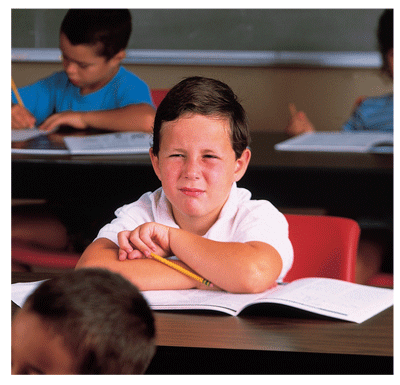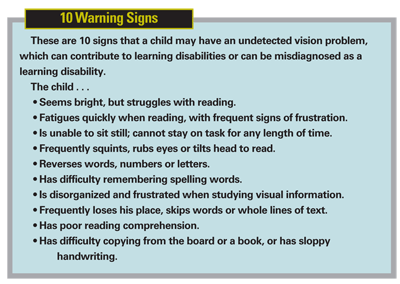To learn in school, use a computer, safely play sports or spend time outdoors, every child needs quality eyewear. This school year, it's time to teach parents and kids all they don't know about vision, eye protection and eyewear options. It's a big job, and to accomplish it, you'll need a planned approach.
Reach Out
Parents aren't conditioned to initiate children's eye care, unless there is an injury, or a screening by the school nurse indicates a vision problem. Go to them directly and inform them their child needs a check-up. Use e-mail if you have e-mail addresses (and if you don't, start collecting e-mail addresses as you dispense). Another very effective method is to send a letter from the doctor. If possible, follow up the message with a phone call. 
Several other ways to reach parents directly:
Send a short article to the local newspaper, with the doctor as the author.
Provide a free vision screening at the local mall during the back to school shopping weeks. Offer to provide vision screening at the local school(s) just as school begins.
Contact coaches at school, Little League, soccer and pee-wee football organizations. Offer to provide free consultation on safety eyewear, and/or speak to parents of student athletes. Speak to the parent-teacher association at the school(s).
Straight Talk
It's no longer a question of, "Does my child need glasses?" Only quality-made, properly measured and fitted eyewear will protect children's eyes from injury and/or UV damage, prevent computer-related eyestrain, and enable learning. Prepare a short and factual message in each of these areas of concern, along with some handouts for parents who want to know more (sources: preventblindness.org, childrensvision.com, allaboutvision.com, or do an Internet search of vision safety and learning websites).
Create a protocol to identify children's needs: Does the child play sports? How much time does he spend outdoors each day? How much time does the child spend on a computer (both at school and at home)? Does your child show signs of vision problems (See sidebar, "10 Warning Signs")? Has your child been identified with a learning disability, such as ADD, ADHD or is he dyslexic? Then have the pertinent message and presentation of eyewear solutions, at the ready.
It Takes a Village
Just like raising a child, "it takes a village" to get a child into proper eyewear. Get the entire practice on board by giving a presentation at a staff meeting. Share the facts about learning, safety, computer vision and UV protection. Ask each department to think about ways they can proactively educate parents and promote quality eyewear for kids. Be sure the doctors share a brief message with parents that endorses sports safety and UV protection, as well as vision/learning issues. By the time the parent reaches the optical, she should be ready to truly hear what you have to teach her.
Know the Options
Polycarbonate and Trivex continue to be the materials of choice for kids' lenses. Parents like to know that polycarbonate is used in bulletproof windows, airplane windows and riot police shields, and Trivex was developed as "visual armor" for the military. This is not just "hype" or a selling tool; optical dispensers have a duty to promote "informed choice" about eye safety.
The threat to eye health posed by UV light is usually not seen with the same urgency as that of an impact injury, but the long-term damage caused by a lifetime of unnecessary exposure is no small concern. While plastic lenses only block 50 percent of the ultraviolet light, polycarbonate and Trivex offer maximum UV protection. Since the protection is inherent in the material, it makes good sense to choose the lens that offers a lifetime investment in healthy vision (select these materials for 
Parents sometimes hesitate to purchase these slightly more expensive materials, for fear that replacement costs would be too high. Fortunately, most polycarbonate and Trivex lenses are offered with high-performance scratch coatings and many come with a replacement warranty.
Computer Vision Syndrome is a problem for kids who love to play video games or even just chat online for long periods of time. An adult might be able to use a single-vision computer lens, but kids are not as tolerant. They tend to look around more, so you need to consider a near-variable focus lens with a powerful intermediate zone. If the child is using a laptop, not a desktop computer, you can sometimes succeed with a short-corridor progressive lens.
If the child's vision is so poor that he has difficulty functioning without glasses, he needs a backup pair. Prescription sunglasses or even a sports goggle can double as a spare pair.
While kids may want a specific color or brand, parents will want something that's going to last. Some of the technological developments that are showing up in adult frames such as spring hinges (which allow for much bending in both directions at the temples) and flexible frame materials (which allow for accidents such as sitting on frames or over-bending when taking them on and off) are now available in children's frames. Thinner, lighter and stronger materials like stainless steel and titanium are becoming more reasonably priced as the supply of frames made of these materials increases.











